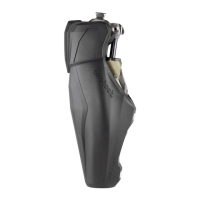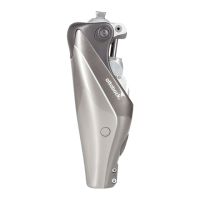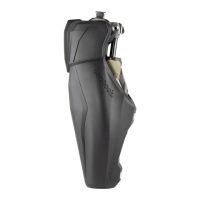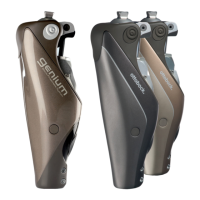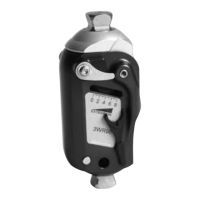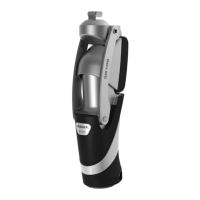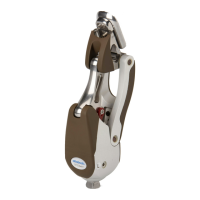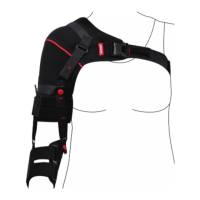Do you have a question about the Otto Bock Genium 3B1 and is the answer not in the manual?
Remote control functionality requires version 1.0.0.6 or higher for the knee joint and remote.
Specifies X-Soft 4X1 version 1.4 or higher is needed for knee joint adjustment.
Details the components of the Genium prosthesis, including adapters, battery, and hydraulic unit.
Explains the microprocessor control, sensor system, and hydraulic unit for dynamic gait adaptation.
Lists compatible Ottobock components that can be combined with the Genium prosthesis.
Specifies the intended use of the product for lower limb exoprosthetic fittings.
Defines the product's application area according to the MOBIS mobility system.
Outlines the product's development for everyday use and restrictions on unusual activities.
Lists patient categories for whom the product is indicated, including amputation types and requirements.
States that fitting must be performed only by qualified Ottobock-authorized personnel.
Defines the meaning of WARNING, CAUTION, and NOTICE symbols used in the safety instructions.
Explains the structure of safety instructions, including hazard source, consequences, and required actions.
Provides general safety warnings regarding power supply, charger, and component manipulation.
Covers safety advice on mechanical stress, battery levels, pinching risks, dirt, transport, and component wear.
Details safety precautions for charging the product, including charger use and compatibility.
Provides notices on product care, charging, and potential issues with battery chargers.
Highlights safety concerns related to component compatibility, assembly, and connection during adjustment.
Advises on maintaining safe distances from HF devices and sources of interference.
Provides safety guidance for specific use cases like walking up/down stairs and handling overheating.
Explains precautions for using and managing safety modes, including potential activation/deactivation issues.
Details safety aspects of using mobile devices with the cockpit app, including improper use and modifications.
Lists all items included in the product package.
Lists optional accessories that can be ordered separately for the product.
Provides step-by-step instructions for connecting the power supply and battery charger.
Details the process of charging the prosthesis battery using the inductive charger.
Explains methods to check the battery charge level via beep signals, Cockpit app, or remote control.
Details the requirements and initial steps for aligning the prosthesis using adjustment software.
Provides instructions and safety precautions for shortening the tube adapter.
Guides through the process of installing the tube adapter, including screw torques and cable connections.
Explains how to adjust the torsion moment on the 2R21 AXON tube adapter.
Describes bench alignment procedures using specialized apparatus or laser/plumb line.
Details static alignment optimization using adjustment software and patient compensation.
Explains dynamic alignment optimization through trial walking and component adjustments.
Specifies required torque values for securing screw connections during prosthesis assembly.
Provides procedures for checking socket clearance at maximum flexion and extension after alignment.
Explains the function of flexion stops and lists available options for limiting the knee's flexion angle.
Details the steps and precautions for removing the flexion stop from the knee joint.
Provides instructions for installing and securing a flexion stop with thread locking compound.
Guides on how to move the inductive charging receiver when installing a cosmetic foam cover.
Lists the Android OS version and tested devices required for the Cockpit app functionality.
Outlines prerequisites for establishing the initial connection between the Cockpit app and the prosthesis.
Details the initial setup steps for the Cockpit app, including EULA acceptance and component addition.
Explains the various control elements and indicators displayed within the Cockpit app interface.
Describes the navigation menu structure and functions available within the Cockpit app.
Covers managing multiple prosthesis connections, including adding and deleting components.
Step-by-step guide on adding a new prosthesis component to the Cockpit app.
Instructions for removing a prosthesis component from the Cockpit app.
Explains how to connect the prosthesis to different devices, managing existing connections.
Describes basic movement patterns and the stance function in the default mode.
Details the stance function, its activation, and its benefits for standing on inclined surfaces.
Explains the initial walking process, emphasizing stabilization and swing phase control.
Describes the 'walk-to-run' function for quick short-distance movement and its settings.
Details the process of sitting down, including weight distribution and body posture.
Explains the sitting function's activation, resistance reduction in flexion/extension, and its effect on prosthetic leg swing.
Provides instructions for standing up, including body posture and weight distribution.
Details the technique for negotiating stairs step-over-step, emphasizing practice and conscious execution.
Describes how to use the stair function to cross obstacles, including hip and knee movements.
Outlines the procedure for walking down stairs, focusing on foot positioning and controlled flexion.
Explains how to manage controlled flexion when walking down a ramp using increased resistance.
Introduces MyModes for specific motion patterns and their configuration via software, app, or remote.
Details how to switch between MyModes using the Cockpit app, requiring Bluetooth connection.
Explains how to switch MyModes by performing specific movement patterns, with requirements and process.
Describes methods to switch back to basic mode from a MyMode, using motion patterns or battery charger.
Explains how to adjust prosthesis settings for the currently active mode using the Cockpit app or remote control.
Step-by-step guide on changing prosthesis settings for a selected mode within the Cockpit app.
Lists and defines adjustable parameters in basic mode for dynamic gait behavior, including stance and stairs functions.
Details adjustable parameters within MyModes for specific motion patterns like 'Brake knee'.
Explains how to enable or disable the prosthesis's Bluetooth function for app connectivity.
Provides instructions on controlling Bluetooth via the Cockpit app for connection management.
Details how to access the prosthesis status information using the Cockpit app or remote control.
Explains mute mode, which turns off audible and vibration feedback signals, and its activation.
Instructions for activating and deactivating mute mode via the Cockpit app interface.
Details how to toggle mute mode using the optional remote control's status menu.
Describes deep sleep mode for minimizing power consumption and how to awaken the prosthesis.
Guides on activating and deactivating deep sleep mode through the Cockpit app.
Explains how to activate and deactivate deep sleep mode using the device settings on the remote control.
Details the OPG function, which promotes biomechanically correct walking and enhances features like PreFlex and adaptive control.
Describes the empty battery mode, its signals, safety mode damping, and how to switch back.
Explains the product's non-functional state during charging and its setting to safety mode damping.
Covers automatic switching to safety mode upon critical faults, its indication, and how to disable it.
Explains overheating mode, its triggers, indication, deactivated functions, and the product's behavior.
States the manufacturer's liability conditions regarding product use and disregard of the document.
Addresses product names, brands, and trade names as registered trademarks and their ownership.
Confirms the product meets European directives for medical devices and radio equipment.
Covers FCC compliance rules and conditions for device operation in the USA.
Lists and explains symbols found on the product, including legal manufacturer and compliance marks.
Lists and explains symbols found on the product, including legal manufacturer and compliance marks.
Explains symbols found on the battery charger, such as legal manufacturer, lot number, and IP rating.
Details beep and vibration signals indicating operating states like charging and mode switching.
Details beep and vibration signals indicating operating states like charging and mode switching.
Lists warnings and error signals, their causes, and required actions for issues like overheating or low battery.
Lists error messages encountered during cockpit app connection, their causes, and correction steps.
Describes status signals for battery charger connection and disconnection, and self-test completion.
Provides technical specifications including environmental conditions, product details, and mobility grades.
| Manufacturer | Ottobock |
|---|---|
| Microprocessor Control | Yes |
| Stance Phase Control | Yes |
| Swing Phase Control | Yes |
| Intuitive Stance Function (ISF) | Yes |
| Bluetooth Connectivity | Yes |
| Compatible with Myo Plus | Yes |
| Product Type | Prosthetic Knee Joint |
| Maximum Body Weight | 125 kg |
| Battery Life | Up to 5 days |
| Water Resistance | IP67 |
| Charging Time | 3 hours |
| Activity Levels | Moderate to high activity levels (K3/K4) |

